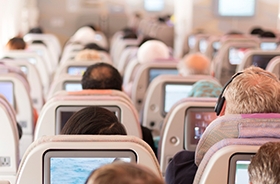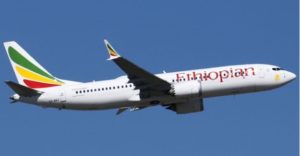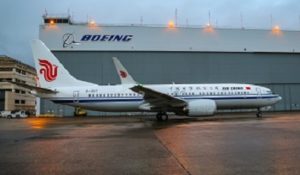IATA forecasts – 7.2 billion passengers to travel in 2035

Geneva ( IATA) – The International Air Transport Association (IATA) expects 7.2 billion passengers to travel in 2035, a near doubling of the 3.8 billion air travelers in 2016. The prediction is based on a 3.7% annual Compound Average Growth Rate (CAGR) noted in the release of the latest update to the association’s 20-Year Air Passenger Forecast.
“People want to fly. Demand for air travel over the next two decades is set to double. Enabling people and nations to trade, explore, and share the benefits of innovation and economic prosperity makes our world a better place,” said Alexandre de Juniac, IATA’s Director General and CEO.
The forecast for passenger growth confirms that the biggest driver of demand will be the Asia-Pacific region. It is expected to be the source of more than half the new passengers over the next 20 years. China will displace the US as the world’s largest aviation market (defined by traffic to, from and within the country) around 2029.
India will displace the UK for third place in 2026, while Indonesia enters the top ten at the expense of Italy. Growth will also increasingly be driven within developing markets. Over the past decade the developing world’s share of total passenger traffic has risen from 24% to nearly 40%, and this trend is set to continue.
The 20-year forecast puts forward three scenarios. The central scenario foresees a doubling of passengers with a 3.7% annual CAGR. If trade liberalization gathers pace, demand could triple the 2015 level. Conversely, if the current trend towards trade protectionism gathers strength, growth could cool to 2.5% annual CAGR which would see passenger numbers reach 5.8 billion by 2035.
Whatever scenario is eventually realized, growth will put pressure on infrastructure that is already struggling to cope with demand. “Runways, terminals, security and baggage systems, air traffic control, and a whole raft of other elements need to be expanded to be ready for the growing number of flyers. It cannot be done by the industry alone. Planning for change requires governments, communities and the industry working together in partnership,” said de Juniac.
The industry will also need to be able to grow sustainably. Earlier this month airlines supported the establishment of a Carbon Offset and Reduction Scheme for International Aviation (CORSIA). This landmark agreement—the first among governments to manage the emissions growth of an entire global industrial sector—aims to cap net emissions with carbon neutral growth from 2020. “Aviation is at the forefront of industries in managing its carbon footprint. Along with offsetting emissions through CORSIA, airlines are working with partners in industry and government to advance technology, improve operations and generate more efficiencies in infrastructure,” said de Juniac.
Key facts (all figures based on central growth forecast)
Fast-growing markets
The five fastest-growing markets in terms of additional passengers per year over the forecast period will be
China (817 million new passengers for a total of 1.3 billion)
US (484 million new passengers for a total of 1.1 billion)
India (322 million new passengers for a total of 442 million)
Indonesia (135 million new passengers for a total of 242 million)
Vietnam (112 million new passengers for a total of 150 million).
The top ten fastest-growing markets in percentage terms will be in Africa: Sierra Leone, Guinea, Central African Republic, Benin, Mali, Rwanda, Togo, Uganda, Zambia and Madagascar. Each of these markets is expected to grow by more than 8% each year on average over the next 20 years, doubling in size each decade.
Regional growth
Routes to, from and within Asia-Pacific will see an extra 1.8 billion annual passengers by 2035, for an overall market size of 3.1 billion. Its annual average growth rate of 4.7% will be the second-highest, behind the Middle East
The North American region will grow by 2.8% annually and in 2035 will carry a total of 1.3 billion passengers, an additional 536 million passengers per year
Europe will have the slowest growth rate, 2.5%, but will still add an additional 570 million passengers a year. The total market will be 1.5 billion passengers
Latin American markets will grow by 3.8%, serving a total of 658 million passengers, an additional 345 million passengers annually compared to today
The Middle East will grow strongly (5.0%) and will see an extra 258 million passengers a year on routes to, from and within the region by 2035. The UAE, Qatar and Saudi Arabia will all enjoy strong growth of 6.3%, 4.7%, and 4.1% respectively. The total market size will be 414 million passengers
Africa will grow by 5.1%. By 2035 it will see an extra 192 million passengers a year for a total market of 303 million passengers
October 2016















